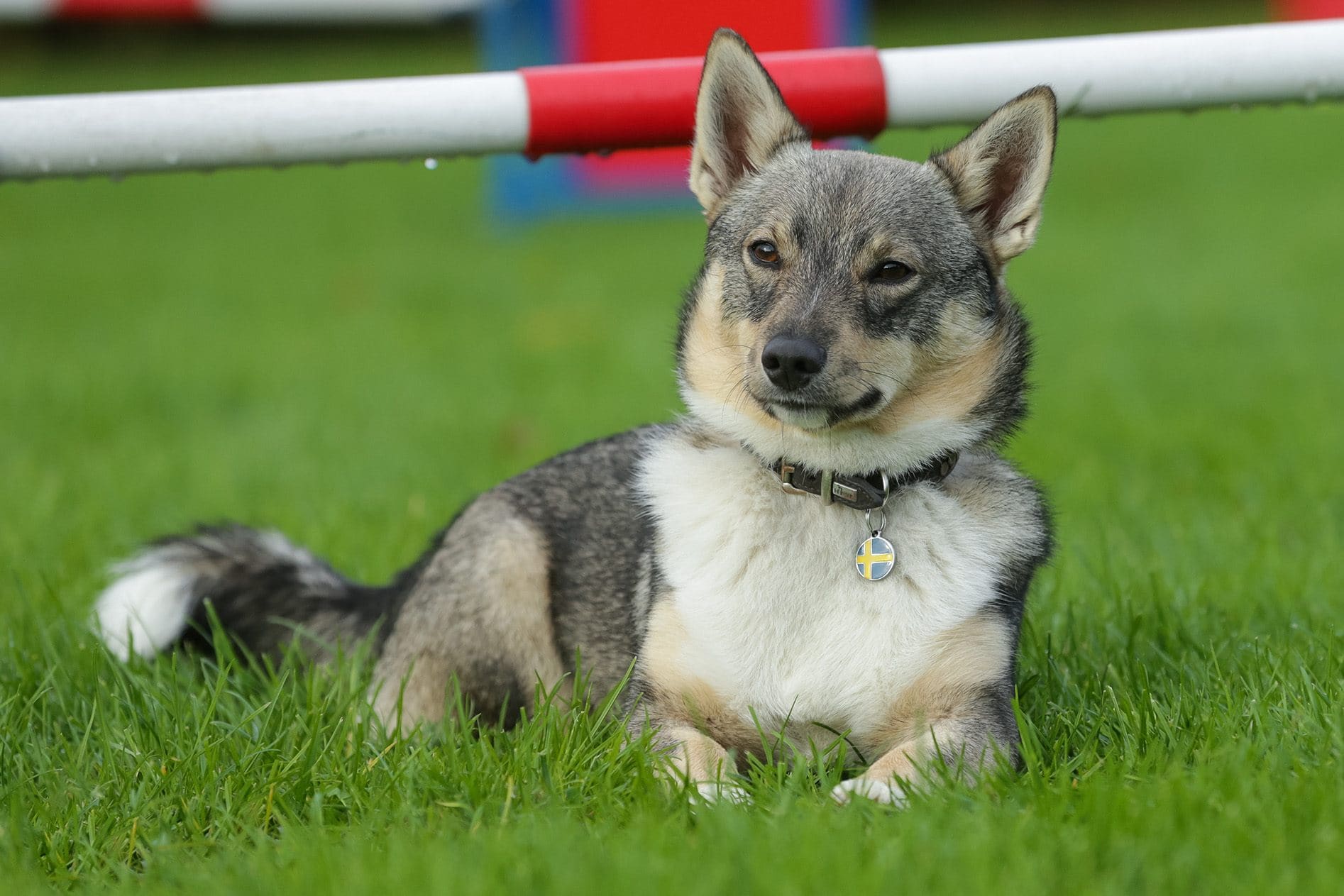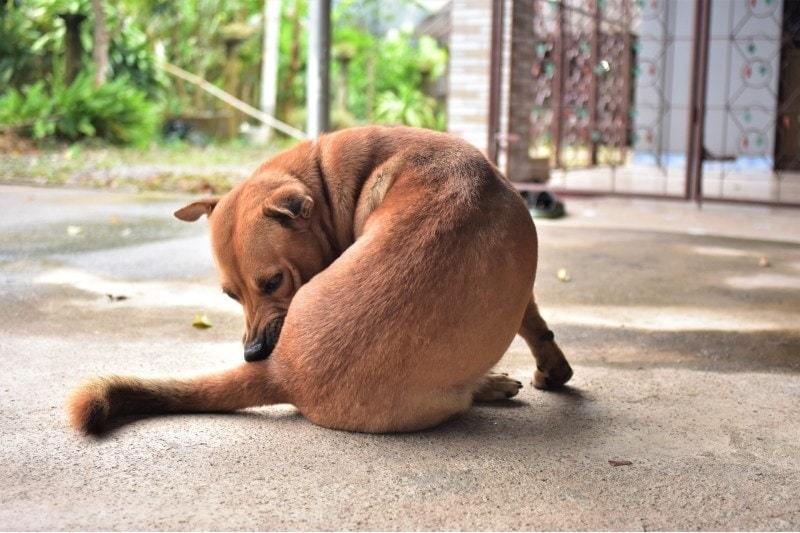How to Crate Train a Corgi: 6 Easy & Practical Tips
Updated on
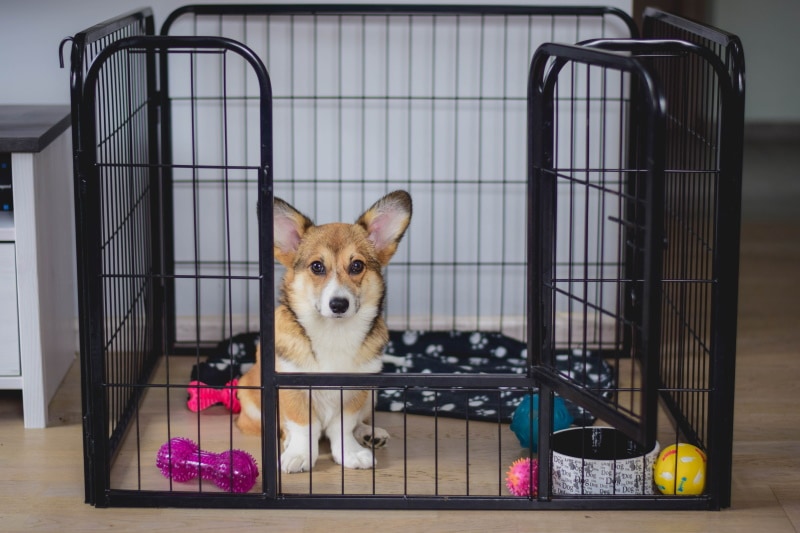
Training a Corgi to spend time in a kennel can seem overwhelming at first, as these dogs are typically lively and suspicious of being tucked away in a container. Fortunately, like most dog breeds, Corgis gain comfort from spending time in a den-like experience, so training your pup to use their crate whenever you see fit shouldn’t be a huge struggle. Here are six tips that you can use to successfully crate train your Corgi.
The 6 Tips on How to Crate Train a Corgi
1. Optimize Comfort
If you expect your Corgi to be comfortable in their crate whether you are around or not, make sure the interior offers optimal comfort. Put a super-cushy dog bed in the kennel, and add a blanket to the setup if it gets cold during the day or night.
Sleep with your dog’s blanket, or keep it on the couch for a few days while you spend time on/or around it. This will help transfer your scent to the blanket and give your dog more comfort by providing a better sense of protection from their owner — you. The smell should help keep your pup calm while they’re in their crate and nobody else is around.
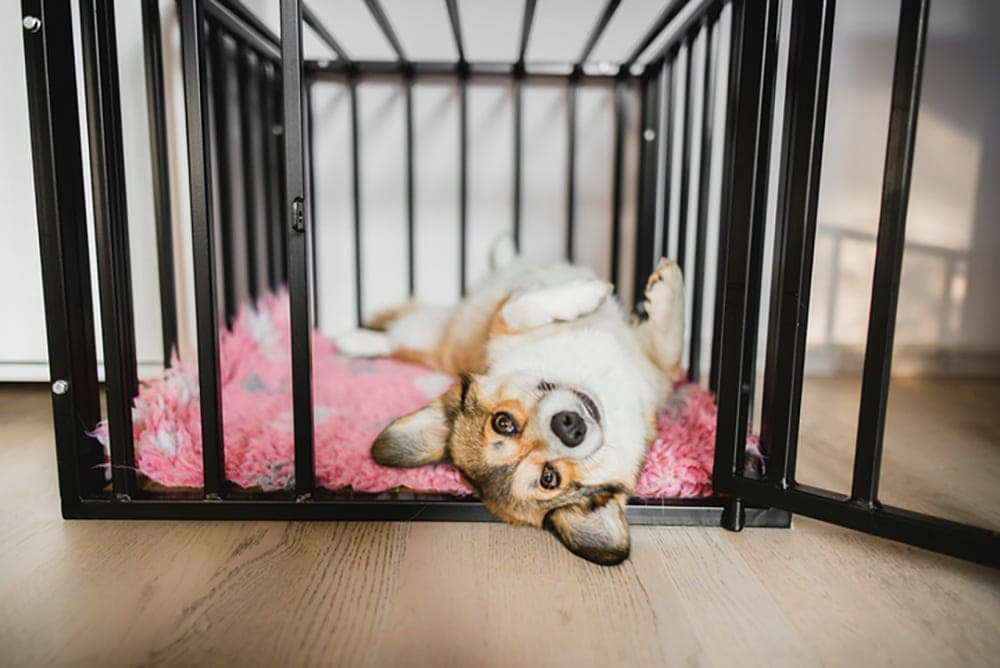
2. Practice Eating and/or Drinking Inside
If your Corgi is not interested in getting in their kennel even when it’s outfitted with comfy bedding and other familiar things, try putting their food and/or water dish in there. Don’t force your pup to enter the crate, but give them no other choice but to enter and take care of their needs. Eventually, your pup should correlate the kennel with comfort and nutrients, so they will be more likely to be content while locked inside the kennel.
3. Make Crate Time a Positive Experience
Make sure your Corgi feels calm and comfortable anytime they get into their crate. Any time that they spend in their crate should be a positive experience, especially when you are crate training them. If going into the crate results in something bad happening, even once, chances are that your pup won’t want to go in there at all, no matter how you try to entice them into doing so. Being in the crate should be relaxing and comforting.
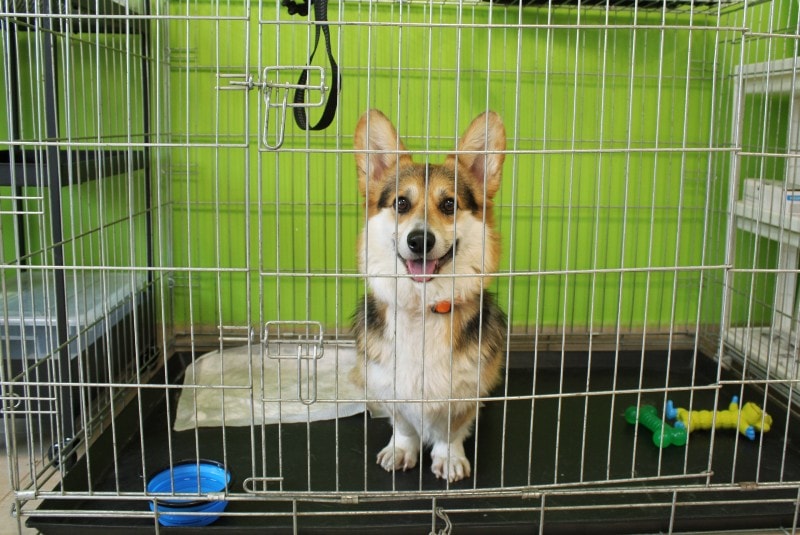
4. Extend Crate Time in Steps
Don’t just put your Corgi in their crate and leave them in there until you’re ready to let them out. This can make them hate the crate and not want to get in it at all in the future. If your pup protests the situation, let them out of the kennel and work in increments. To start, get your pup to be comfortable in their crate for 30 seconds.
Next, get them to stay in there for 2 minutes without protest. Then, work toward the 5-minute mark. Keep going until you can leave the house for a few hours while your pup happily hangs out in their crate.
Begin by walking around your home where your pup can see you when they are in their crate. Then, move to other parts of your home and eventually, outside where you can’t be seen, until you’re sure your dog will do okay when you are not at home.
5. Keep the Kennel in a Quiet Spot
It is a good idea to put your Corgi’s crate in a quiet spot in the house where they tend to feel the most comfortable. This will help keep them from focusing on things that seem “chaotic” to them, like young kids roughhousing, and ensure that they feel protected while spending time in their crate. Your pup should feel comfortable and safe in their kennel, or they will simply fight against spending time in it.
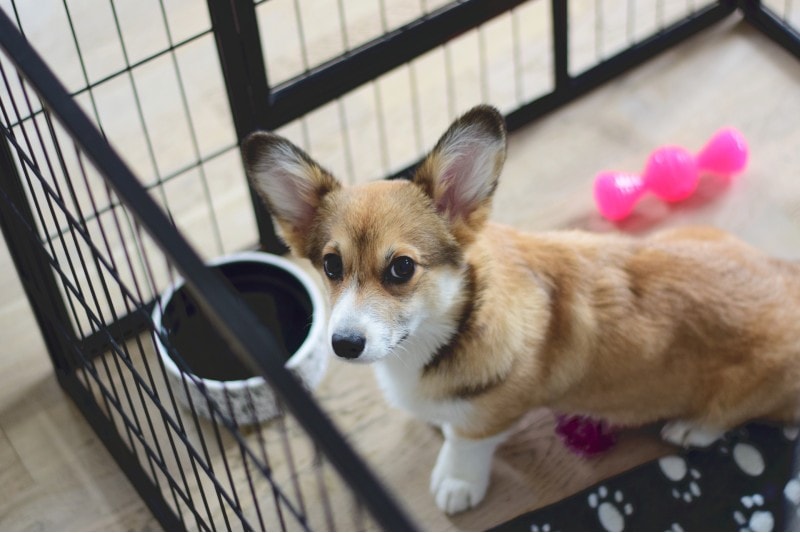
6. Reward Good Behavior
It is always a good idea to reward your Corgi for good behavior whenever they spend time in their crate without protest, even if it’s just for a few seconds. Every time your dog meets your expectations — which should be clearly set — reward them with a treat or a petting session. Knowing that praise comes at the end of it is what will get your pup to happily spend time in their kennel.
Troubleshooting Training Problems
Your Corgi might not cooperate with crate training at first, so it’s important to troubleshoot the training problems so you can correct the issue and get on the right track. Here are a few specific things that you can do to deal with crate-training problems with your Corgi:
- Don’t Rush — Take your time and have patience. Don’t rush the process of crate training, or your Corgi might resist even more. Patience is key. If your pup doesn’t respond right away, don’t get frustrated. Stay patient and keep trying. Eventually, your patience should pay off.
- Avoid Negative Reinforcement — The more you get mad at your dog for not being comfortable in their crate, the less comfortable they are likely to be. It is important to keep from getting upset in front of your pup while crate training them. If necessary, leave the room or go outside until you calm down.
- Restart From Scratch — When you are not making any progress with your pup, it is a good idea to reset and start again from scratch. Don’t push your pup so much next time, and reinforce the positive aspects of being in a kennel during each training session.
- Never Push Your Pet — It is important not to push your pet to get in their kennel when they really don’t want to. Your job is to figure out a way to make your Corgi want to enter and stay inside whenever you want them to.
- Always Reward Good Performance — If your pup stays in their kennel without issue, it is important to show them that you appreciate their behavior by rewarding them when they get out of their kennel. The thought of a reward for being in the kennel will help make future stays in the space better for them.
Conclusion
Teaching your Corgi how to enjoy their crate without whining and protest can take a while, but every dog of this breed has it in them to actually enjoy the time that they spend in their kennel. It is just a matter of making the space comfortable, safe, and rewarding overall. Hopefully, you’ll find the tips on this list to be helpful!
Featured Image Credit: Jus_Ol, Shutterstock





